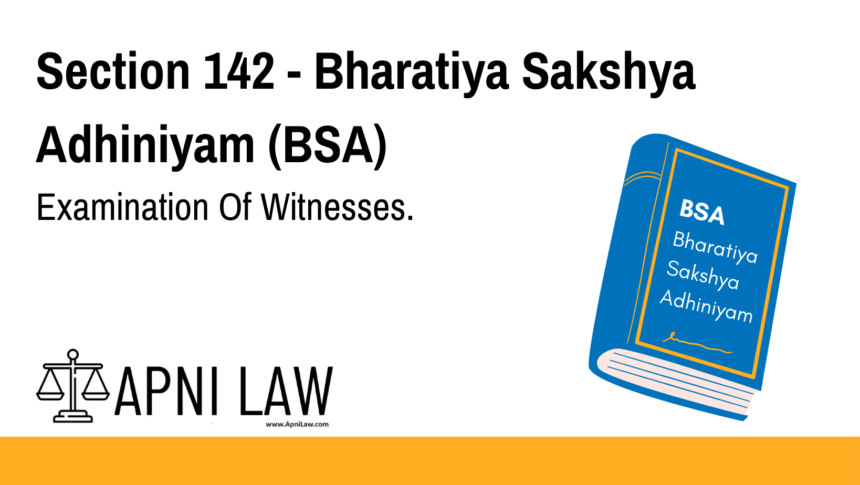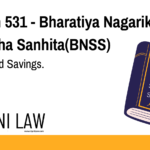Code: Section 142 BSA
(1) The examination of a witness by the party who calls him shall be called his
examination-in-chief.
(2) The examination of a witness by the adverse party shall be called his
cross-examination.
(3) The examination of a witness, subsequent to the cross-examination, by the party
who called him, shall be called his re-examination.
Explanation of Section 142 BSA
Section 142 of the Bharatiya Sakshya Adhiniyam, 2023 lays out the three primary stages in the process of examining a witness during a judicial proceeding—examination-in-chief, cross-examination, and re-examination.
This section ensures that witness testimony is presented in an orderly and fair manner, providing both parties with a structured opportunity to present and challenge evidence.
1. Examination-in-Chief
This is the initial questioning of the witness by the party who has called them to court. Its main purpose is to present facts that support that party’s case. Leading questions are generally not permitted during this stage.
2. Cross-Examination
After the examination-in-chief, the opposing party is entitled to question the witness. The purpose is to test the truthfulness, consistency, and credibility of the testimony. Leading questions are allowed during cross-examination.
3. Re-Examination
Once cross-examination is complete, the party who initially called the witness may question the witness again—but only to clarify issues raised during cross-examination. This stage is limited and cannot introduce new matters.
Illustration
Example 1:
In a criminal trial, the prosecution calls a witness to describe events they observed. First, the prosecution asks the witness questions (examination-in-chief). The defense then questions the same witness to find inconsistencies (cross-examination). If needed, the prosecution may ask follow-up questions to clarify those points (re-examination).
Example 2:
In a civil case concerning a contract dispute, the plaintiff’s witness is examined by the plaintiff’s lawyer to present evidence. The defendant’s lawyer then cross-examines the witness to challenge their testimony. The plaintiff’s lawyer can then re-examine the witness to address any confusion created during cross-examination.
Common Questions and Answers
Q1. What is the purpose of examination-in-chief?
It allows a party to present their side of the story through their witness, laying down relevant facts without leading the witness.
Q2. Why is cross-examination important?
Cross-examination tests the credibility and accuracy of the witness’s testimony, helping the court assess its reliability.
Q3. Are leading questions allowed in examination-in-chief?
Generally, no. They are only allowed with the court’s permission or if the witness is declared hostile.
Q4. What can be asked during re-examination?
Only questions related to matters raised in cross-examination. New facts cannot usually be introduced.
Q5. Can a witness avoid cross-examination?
No. If a witness has been examined-in-chief, the opposing party has the legal right to cross-examine them. Refusal may result in the testimony being disregarded.
Conclusion
Section 142 of the Bharatiya Sakshya Adhiniyam outlines a critical part of courtroom procedure. It ensures that both parties in a legal dispute are given a fair and equal opportunity to present and challenge evidence through a structured process. This promotes justice by helping courts arrive at truthful and well-supported conclusions.
For more clear and concise legal insights, visit ApniLaw.








